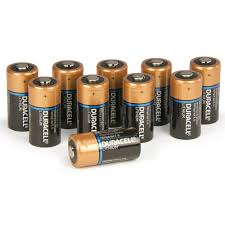3.1 Electric Systems
Electric Systems
In general physics, topics are broadly divided into mechanics and electromagnetism, with additional topics such as thermodynamics, fluids, sound, waves, optics, and modern physics introduced in other contexts. In AP Physics 1, the focus is on mechanics, waves, sound, and introductory modern physics. AP Physics 2 delves deeper into electromagnetism, fluids, thermodynamics, optics, and advanced modern physics.
Electromagnetism, a cornerstone of physics, is divided into three units: electricity, circuits, and magnetism. Here, we shift from the macroscopic focus of mechanics to the microscopic processes underlying electricity, exploring how everyday objects like batteries function.

Objects vs. Systems
The AP Physics 2 curriculum emphasizes the distinction between objects and systems:
Object: A physical entity characterized by properties like mass, volume, and density. An object can be singular (e.g., a single particle) or composite (e.g., a molecule).
System: A collection of objects analyzed collectively, defined by boundaries (physical or conceptual) that dictate interactions with surroundings.
Key Differences:
Study Focus: Objects are studied in isolation, while systems are studied in terms of interactions and exchanges.
Properties: Objects are described by physical attributes; systems by their internal interactions and exchanges with surroundings.
Scope: An object emphasizes individual characteristics, while a system focuses on relationships and overall behavior.
Example:
Object: Gas within a balloon and the balloon itself.
System: The gas-balloon combination. To model general behavior (e.g., temperature), the system can be treated as a singular object.
Electric Systems and Objects
Examples of Electric Systems:
Electric Circuits: Closed loops of components enabling electricity flow (e.g., household circuits, car electrical systems).
Electric Fields: Regions where charges experience forces (e.g., fields around charged objects).
Electric Potential: The potential energy of a charge within an electric field (e.g., voltage).
Examples of Electric Objects:
Electric Generators: Convert mechanical energy to electrical energy (e.g., wind turbines).
Electric Motors: Convert electrical energy to mechanical energy (e.g., washing machine motors).
Batteries: Store electrical energy (e.g., lithium-ion batteries).
Electric Charges: Fundamental properties of matter (e.g., electrons, protons).
Internal Structure and Behavior
The internal structure of objects significantly affects system behavior, especially in fluids, where interactions between particles influence macroscopic properties. In certain models, however, the internal structure may be negligible, allowing the system to be simplified as a singular object.
Summary
Understanding the relationship between objects and systems is crucial in physics. As we explore electric systems in this unit, we’ll analyze both the individual components and their collective interactions. From electric circuits to charged particles, each system reveals the fascinating interplay of forces and energy at both macroscopic and microscopic scales.







